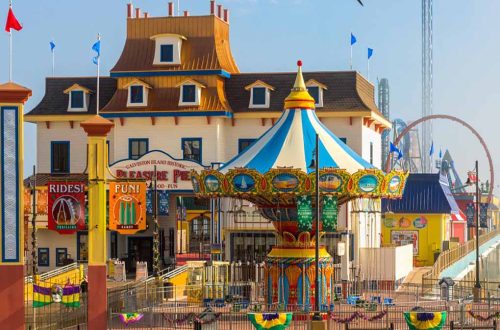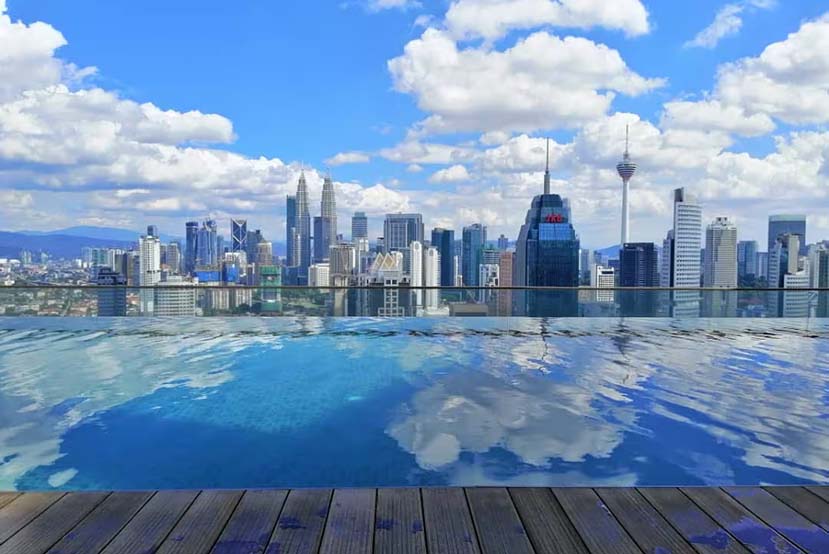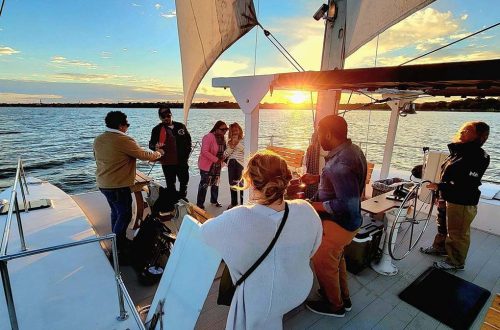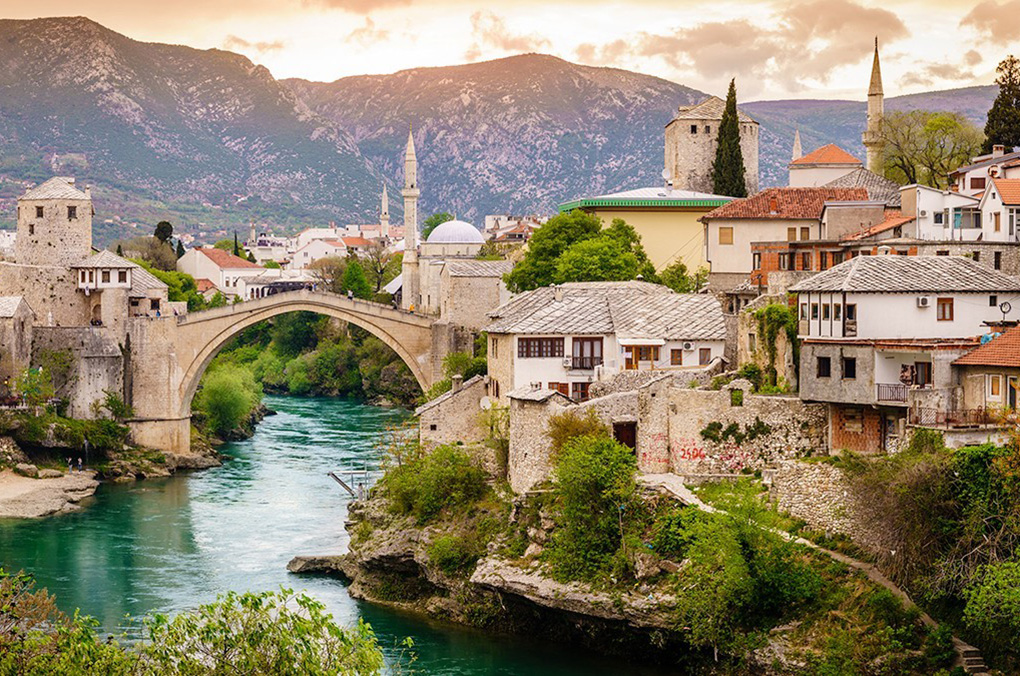
Vacation Bosnia and Herzegovina: the Rough Diamond of the Balkans
For those looking for something different from the well-known European destinations, a vacation in Bosnia and Herzegovina is a fantastic choice. The landscapes are beautiful and diverse, and the cities and villages have a rich history. Bosnia and Herzegovina could be seen as the rough diamond of the Balkans: incredibly beautiful, but not always easy to travel to. If you’re coming from comparatively prosperous and touristic Croatia, it’s a real change, but in return, you get an extremely beautiful, charming, and quirky country!
The Recent History of Bosnia and Herzegovina
When Bosnia and Herzegovina declared independence and sought to secede from Yugoslavia in 1992, unrest arose between the different ethnic groups. The Bosnian Serbs were against independence. Not long after, the Bosnian civil war broke out. In the brief four years that the war lasted, many atrocities were committed by (mostly) the Yugoslav People’s Army, such as mass murders and ethnic cleansing. The most infamous of these is the massacre at Srebrenica, in which Dutch UN soldiers played a significant role.
After the War in Bosnia and Herzegovina
After much international intervention, the war in Bosnia came to an end in 1995 with the Dayton Agreement. Bosnia and Herzegovina were divided into two parts, the Federation of Bosnia and Herzegovina and the Republika Srpska, with an overarching federal government. Despite the political situation in the country remaining unstable, it is now a safe country to travel to. However, the traces of the civil war are still visible in many places. For example, in some parts of the country, you can see many vacant houses and ghost towns.
Sarajevo: the Capital of Bosnia and Herzegovina
The capital of Bosnia and Herzegovina, Sarajevo, is also its most famous attraction, and not without reason. Sarajevo is a city full of history, with plenty to discover and do. The largest religion in Bosnia and Herzegovina is Islam, and this is well reflected in Sarajevo by the many mosques the city boasts. The most famous and largest is the Gazi Husrev-beg Mosque, which is open to visitors at scheduled times. In addition to Islam, two branches of Christianity are also well represented in Sarajevo, with both Catholic and Eastern Orthodox churches. As a result, the city offers an interesting mix of cultural buildings architecturally.
The Old Bazaar
The mixture of cultures is also reflected in the Baščaršija, which is the old bazaar and the historic center of Sarajevo. The bazaar dates back to the 15th century, but due to a fire in the 19th century, only half of it remains today. You can wander around here for hours, soaking in the atmosphere, enjoying Oriental delicacies such as Baklava, and visiting the famous Sebilj fountain. According to local legend, anyone who drinks the water from this fountain will eventually return to Sarajevo.
The Abandoned Olympic Bobsleigh Track
For those interested in the Bosnian Civil War, there are several museums that highlight the recent history of the country. The nearby abandoned Olympic bobsleigh track also offers a glimpse into the country’s turbulent past. The track was used by the Bosnian Serbs as a tactical point during the Siege of Sarajevo. Afterward, the track fell into disuse but has gained a new lease on life thanks to the beauty created by the combination of decay and numerous graffiti. You can climb the mountain where the bobsleigh track is located on foot or take a cable car up.
Kravica Waterfalls and Una National Park
One of the absolute gems of Bosnia and Herzegovina is Una National Park. The area is known for its many waterfalls and rich biodiversity. The park covers a vast area along the border with Croatia and has several entrances leading to various attractions in Bosnia and Herzegovina. You pay a small fee at the entrances to enter the national park by car or on foot. The road at entrance 3 leads to the impressive Štrbački buk waterfall, where you can have a nice picnic or even take a rafting trip. Further south is the hamlet of Martin Brod, where there is plenty to explore. From fairytale streams and waterfalls to an abandoned railway tunnel. Unfortunately, swimming at the waterfalls is not allowed, but it is possible at other parts of the river, although the water is still very cold even in summer!
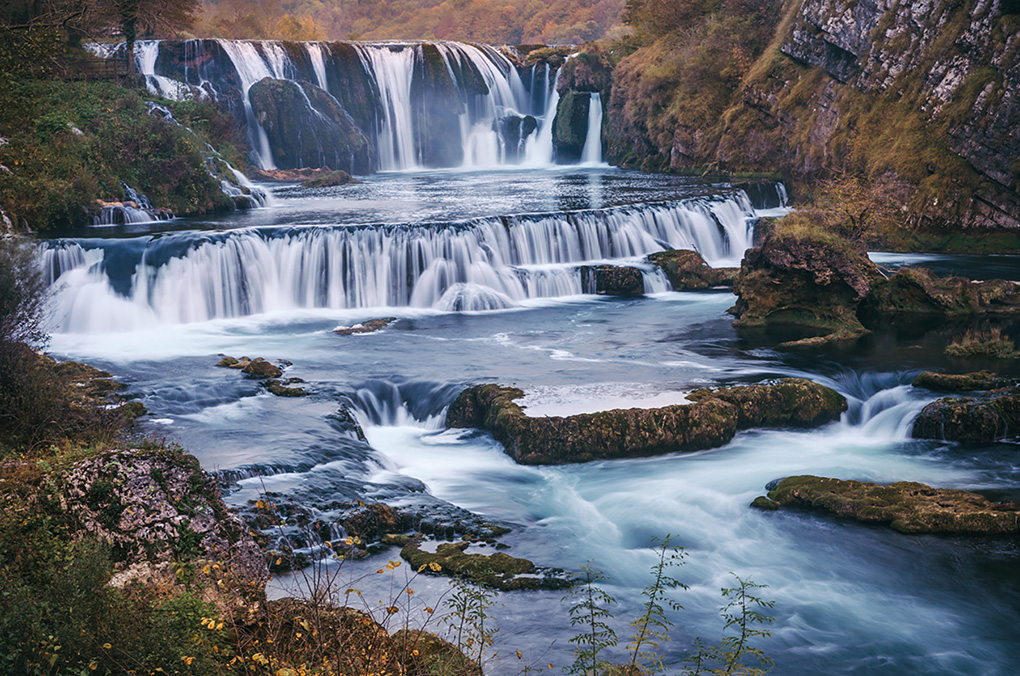
The Kravica Waterfalls
Another must-see attraction in Bosnia and Herzegovina during your vacation is the Kravica Waterfalls. This is actually the Bosnian and much less known alternative to the Croatian Plitvice Waterfalls. This means that it is much less touristy here, and you also pay a lot less for admission! You can swim here, and it is therefore a popular spot among locals in the summer. If you want to have the waterfalls to yourself, it is advisable to come early. It is also possible to eat at a restaurant next to the waterfall and camp further along the river.
Mostar and Surroundings: Old Towns and Impressive Castles
Located in the southwest, near the border with Croatia, Mostar is one of the most visited places in Bosnia. This town also has a long history of conflicts and a mix of cultures. The old bridge, Stari Most, which crosses the Neretva River in the middle of the city, is the symbol of Mostar. The bridge was built in the 16th century and is emblematic of Islamic architecture in the Balkans. During a conflict between Bosnian Croats and Bosniaks in 1993, the bridge was destroyed but later rebuilt. The centuries-old tradition of local men jumping off the bridge into the river twenty meters below is still upheld. In addition to the bridge, Mostar’s old town offers plenty of other interesting architecture and many charming shops and cafes. Mostar therefore offers plenty of sights to explore during your journey through Bosnia and Herzegovina.
Blagaj and Počitelj
In the vicinity of Mostar, there are several small towns that are definitely worth a visit during your vacation in Bosnia and Herzegovina. Blagaj is one of them, with its impressive old fortress. Here, you will also find the Dervish house or Tekija, which is perhaps the most photographed spot in Bosnia. Additionally, the 14th-century museum village of Počitelj is highly recommended if you want to take a trip back in time. Like many other places, it was largely destroyed during the civil war but has since been completely reconstructed. Its hilltop location combined with Ottoman architecture makes it a unique place to visit during your journey through Bosnia and Herzegovina.
Hiking in Bosnia: Idyllic Lakes and Rugged Mountain Landscapes
Mountains abound in Bosnia and Herzegovina, but hiking does not seem to be a very popular activity, so the number of easily accessible mountains is unfortunately minimal. Two exceptions are the highest peaks in the country, Maglić and Volujak, which are 2,386 and 2,336 meters high, respectively. They are both located on the border with Montenegro, and the hikes you can take here are clearly marked, offering fantastic views. Another mountain worth climbing is Troglav (1,913m), located near the border with Croatia. The trail to the top is less well-marked, especially the first part may be unclear. Therefore, we recommend gathering information from local residents in the village at the foot of the mountain before starting the hike.
The Most Beautiful Lakes of Bosnia and Herzegovina
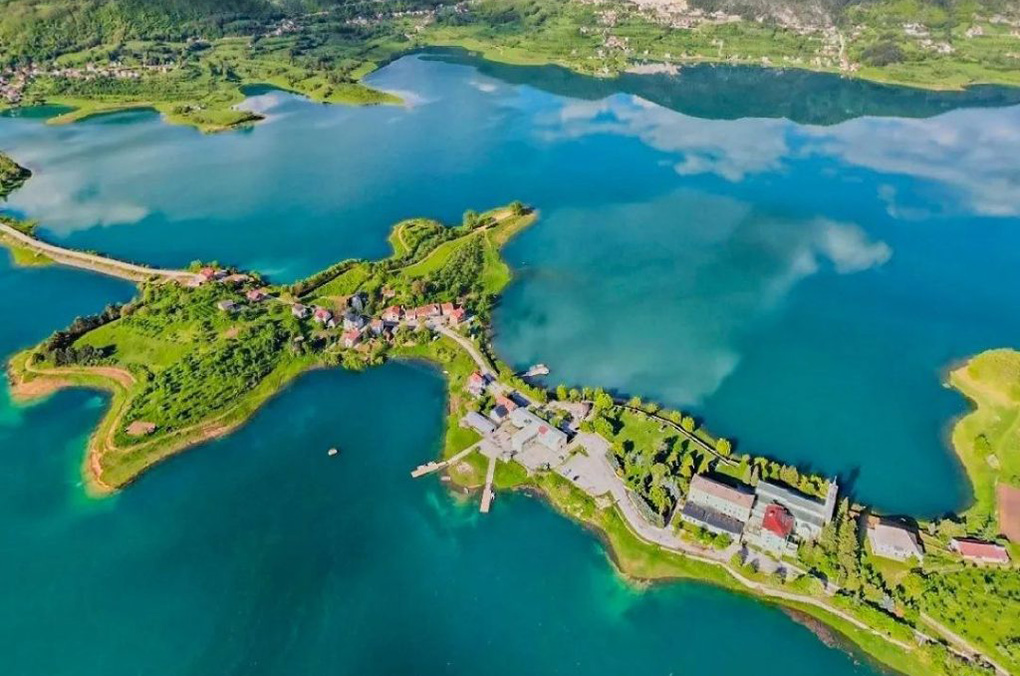
Nestled among the many mountains are some beautiful lakes, which are generally much more accessible. For example, there’s Busko Jezero, a large tranquil lake near the border with Croatia, where you can camp by the shore. Always remember to camp responsibly and leave no trace. Additionally, there’s Jablaničko Jezero, a reservoir between Jablanica and Konjic. The color of the water and the surrounding mountains resemble landscapes in Southeast Asia, and the lake is a popular destination for local tourism. Here, you can swim, boat, or kayak. Accommodation options include surrounding campsites or apartments.
The Most Beautiful Lake: Boračko Jezero
However, we consider the most beautiful lake to be Boračko Jezero, which lies precisely between Sarajevo and Mostar. You’ll need to pay a small fee to drive here, but it’s definitely worth it. The crystal-clear water is wonderfully refreshing in the summer, and the campground right by the lake has a cozy atmosphere.
Combining Bosnia with Montenegro and/or Croatia
A tour of Bosnia and Herzegovina is ideal to combine with a visit to one of the neighboring countries, Montenegro and Croatia. Croatia, in particular, is a logical option if you’re coming from the Netherlands, as you’ll likely need to pass through it anyway. Additionally, many beautiful places in Bosnia are near the Croatian border. Therefore, it’s perfect to take the return journey to the Netherlands along the Croatian coast and make stops at beautiful beaches and towns like Trogir and Šibenik along the way. If you have more time, combining Bosnia with the stunning Montenegro is also an option.


